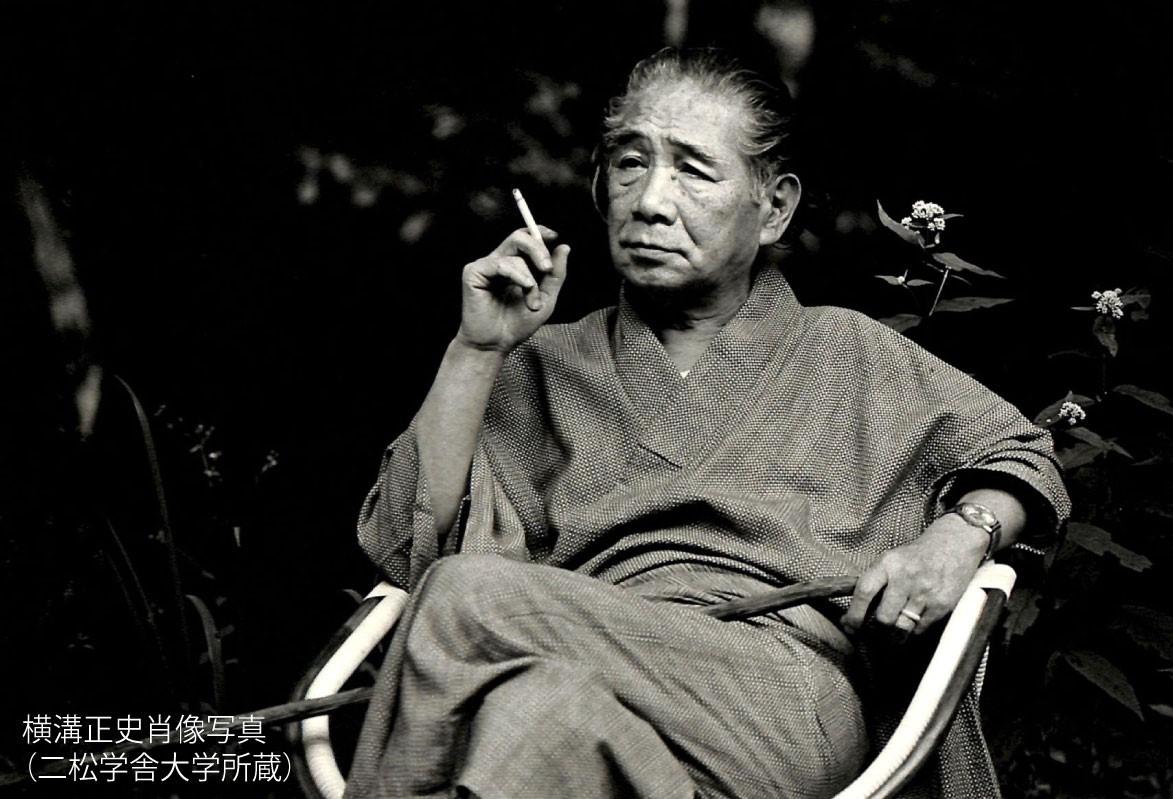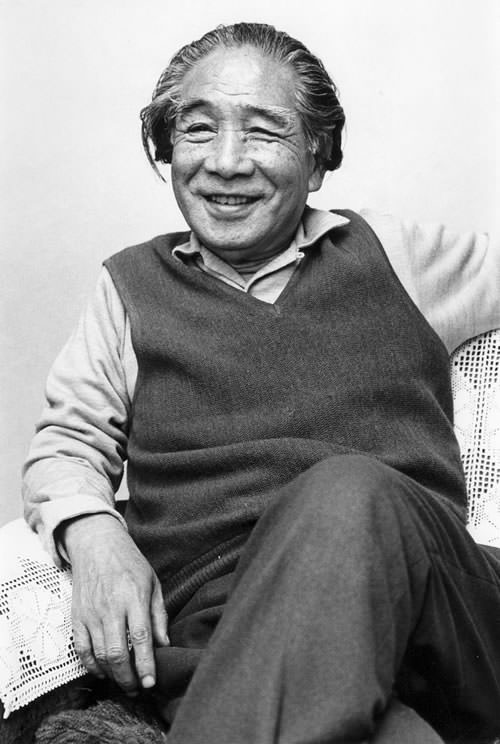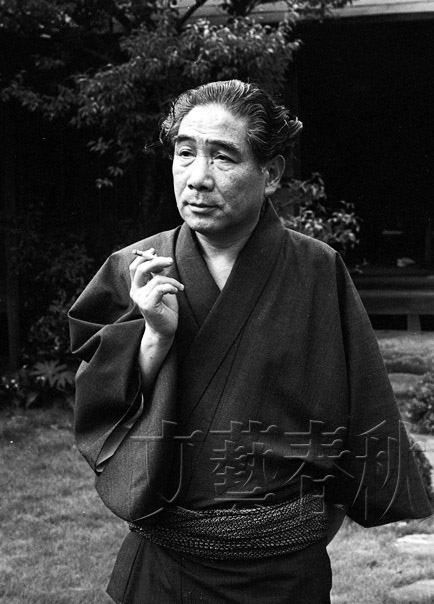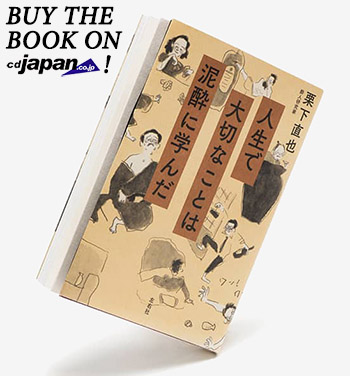Yokomizo Seishi
If you just can’t handle riding on trains
Author | 24 May 1902 – 28 December 1981
On my days off, I like to start drinking at noon.
Well… Truth be told, I’d like to start drinking the moment I awake. It’s the cowardly office worker spirit in me that stops me. It’s telling me how, if I make a habit of drinking in the mornings, I might start doing so on the weekdays, too.
But man, do I want to drink. I want to drink. I want to drink. I want to drink it all.
To suppress my cravings for alcohol—which, unlike the waves that come and go, only ever come—I try to force myself to make plans in the A.M. for all my days off. There’s the old saying, “The devil finds work for idle hands.” And indeed, us drinkers, we like to spend any free time we have on drinking.
Yokomizo Seishi, best known for his works like The Inugami Curse and The Village of Eight Graves from his Kindaichi Kosuke novel series, was exactly one of those people who found himself in trouble after spending all his spare time on drinking. Even someone like Yokomizo—an author for whom the descriptor “idle hands” was by no means appropriate—would spend every moment of leisure on guzzling down the drinks.
(By the way, in the Kindaichi Kosuke series which became a film and TV drama staple, many different famous actors went on to play the role of “Kindaichi.” Out of all those actors featured, Yokomizo specifically cited Atsumi Kiyoshi as being closest to his “image” of the character. That just doesn’t make sense to me as a Furuya Ikko fan. But I digress.)
In the early years of the Showa era (1926–1989), before he became a full-time writer, Yokomizo was a company employee working as an editor. I say “working,” but really he would only show up at the office at four in the afternoon. By all accounts, he was leading a very carefree work life—nothing you’d ever expect to see in the toxic workplaces of today. One kind of gets the sense that there was really no point in him coming in at all. In any case, going in to work once a day even if to just briefly show his face had become his daily routine.
While that all sounds very enviable, his lifestyle changed drastically when he left the company. He reflects on his post-resignation life in his autobiography.
If I wrote just 30 pages, that alone would already earn me 90 yen. My salary when I quit the company had only been 105 yen.
I had nothing to do, so I just drank from morning till night. It was beer for me around then. I didn’t even eat—I just drank. And of course I’d be hungover the next day. And of course I’d start drinking again first thing in the morning.
I wonder how many beers a day I was having back then…?
Naturally, this lifestyle couldn’t last very long.
In May 1933, he suddenly started vomiting blood at a Ginza cafe. While this surprised him and the people who were with him, once he’d finished throwing up said blood he just went on drinking as usual. He proceeded to get drunk, and he went home.
You might be thinking, “Jesus, just how much do you love booze? And why didn’t anyone try to stop him?!” And sure enough, continuing to drink when you’re vomiting blood isn’t so great for your health. Because the next day, he threw up even more of it. A lot more.
In fact, it was apparently so much blood that his wife could barely contain it in a wash bowl. This was no laughing matter. He was later quoted as saying, “I guess it was because I was just drinking and not eating at all.”
You guess, huh?
After throwing up at the cafe, Yokomizo started to feel unwell. He was laid up with illness during the war, but this incidentally allowed him to recharge his batteries as a writer, and after the war he was in the forefront of the mystery genre. But with the advent of “social awareness mysteries” by authors like Matsumoto Seicho, he was gradually publishing fewer and fewer works by the 1960’s.
But then, he suddenly became popular again in the early 1970’s when publisher Kadokawa Shoten’s then-president Kadokawa Haruki made Yokomizo’s works the centerpiece of his media franchise.
Society and the media as a whole had completely forgotten about me as an author. But then The Village of Eight Graves was picked up by Kadokawa Bunko in the spring of 1971, and it started selling surprisingly well, quickly reaching 100,000 copies sold.
(“Shinsetsu Kindaichi Kosuke”)
After scoring such a hit, he was obviously now in big demand. He remembers, “They kept asking for more and more, and I kept giving it to them.” Naturally, as his publications grew in number, this led to some works of lesser quality to become published, too. Even Yokomizo’s friends warned him about this, telling him it would “affect his good name.” But due to Kadokawa Haruki’s insistence, the publications kept coming.
But while the people around him were concerned, the book sales were not slowing down.
In just a few years, I’d sold over five million; over ten million books. For a timid person like me, these numbers were mind-boggling.
Now he was really raking it in. In 1976, his earnings exceeded 300 million yen (USD$2M). He was at 22nd place on the list of the country’s richest people, with Matsumoto Seicho and Shiba Ryotaro as the only two authors above him. This should give you some idea as to how popular he had become.
Yokomizo remained a popular and industrious writer until the final years of his life. However, his binge drinking was interfering with his daily life. He had developed a fear of confined spaces.
In 1933—the same year he threw up blood—he got on a train at Tokyo Station. When it reached Chiba, he had a seizure and got off the train. Ever since then, he had been suffering from a phobia of vehicles. He talked about the possible cause in a conversation with author Kobayashi Nobuhiko in the book Yokomizo Seishi Tokuhon.
Kobayashi: By the way, your fear of vehicles—what’s the deal with that anyway?
Yokomizo: I guess it’s something related to alcoholism.
Kobayashi: So you genuinely feel afraid?
Yokomizo: I do. I feel like screaming, “Make it stop!”
Once again: you guess, huh?
While Detective Kindaichi Kosuke gets on a train and heads out to all sorts of places to solve cases, Yokomizo himself could go hardly anywhere. He wrote Murder on Gokumon Island while evacuated to Okayama Prefecture during the war, and although the setting was based on the island of Mushima in the offshore of Kasaoka, he had of course never been there himself. Instead, he simply interviewed a friend of his for his depictions of the island.
But regardless of whether he actually went there or not, Murder on Gokumon Island is nevertheless a masterpiece among masterpieces. Edogawa Ranpo once said that a successful detective story needs “a mysterious beginning, a suspenseful middle, and an unpredictable ending.” Murder on Gokumon Island has it all. In Bungeishunju’s Top 100 Mystery Novels of the East and the West, it was ranked in first place in the Japanese category in both 1986 and 2013.
Now, while it is possible for someone to author masterpieces despite suffering from a fear of vehicles, handling one’s day-to-day errands will be difficult if you’re unable to even get on a train. So how did he manage it?
My vehicle phobia was so bad that I had to have alcohol in my system to even get in a car.
(“Shinsetsu Kindaichi Kosuke”)
You’re afraid of vehicles due to alcoholism, so in order to overcome said fear, you drink. It kind of feels like something doesn’t quite add up here. Because it absolutely doesn’t. Not even Kindaichi Kosuke could solve this mystery—not even “in the name of his grandfather.”
But it seems that this coping mechanism had some unexpected adverse effects. The following quote is a bit long, but bear with me.
Alcohol is a substance that is effective at numbing the senses. But then on the other hand it also accelerates one’s metabolism, inevitably making you want to pee more often. Once you make it to Shibuya, at least there you have the department stores that let you use their restrooms. But it’s agony trying to hold it until you get there.
However, at some point I became able to at least somehow bear getting into cars without the need for alcohol. I still always carry with me a pocket bottle of whisky for self-protection, but even then the memories of the past seem to haunt me, because whenever I go out I always fear I might need to pee. And so, for instance, if I know I’m going out at three o’clock, starting from noon I will completely abstain not only from tea and salt but any and all liquids.
He’s showing the level of preparation of a high school student going in for his entrance exams. The tension is more palpable than in Old Enough!
But one must not forget: for this man, riding a car or a train had become a once-in-a-lifetime event; a genuine do-or-die situation. It’s even said that during the postwar period when his vehicle phobia was at its worst, he rode the train only twice in the span of six years.
Now that is rare. They probably get eyewitness reports of Bigfoot on a more frequent basis. And the two times he did ride a train, he had to be accompanied by his wife!
Yokomizo is an unusual author in that he enjoyed an unprecedented amount of success in his later years, leaving his mark on history. While it was a life of drunkenness, Yokomizo was—despite being a famous writer—a very shy man. Alcohol must have been very beneficial to him.
Similarly, even for the average office worker, the drinks enjoyed over company dinners play an important part in creating harmonious human relations.
You sometimes hear about the revival of “nominication“—socializing with your colleagues over drinks—but if you end up doing a little too much “socializing” at the bar and you’re unable to even commute to work the next day, that’s no laughing matter.
Every salaryman hates the morning rush hour to begin with, and in the Greater Tokyo Area it’s pretty much impossible to avoid having to commute by train. But let’s say that in the face of death you pour some alcohol in you, and somehow you manage the commute. But now, you find yourself unable to walk into your client company’s offices. Just how much liquid courage does one need to get through the day?!
These stories are so intense that the conclusion is all starting to sound like a big alcohol commercial. Please remember to drink in moderation.





Managing the commute…
https://www.youtube.com/watch?v=FKoNh_naWms